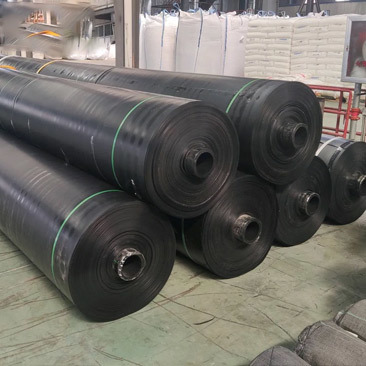Understanding Geomembranes: A Crucial Component in Construction Projects
Release time:
2025-09-21
Geomembranes are versatile synthetic membranes used primarily in civil engineering and construction projects. They serve as impermeable barriers that control the movement of liquids or gases in various applications, making them essential in a wide range of industries, particularly in construction. Typically made from materials such as high-density polyethylene (HDPE), low-density polyethylene (LDP
Geomembranes are versatile synthetic membranes used primarily in civil engineering and construction projects. They serve as impermeable barriers that control the movement of liquids or gases in various applications, making them essential in a wide range of industries, particularly in construction. Typically made from materials such as high-density polyethylene (HDPE), low-density polyethylene (LDPE), or polyvinyl chloride (PVC), geomembranes are designed to withstand harsh environments, ensuring long-lasting durability and reliability.
One of the primary functions of geomembranes is to prevent water infiltration in landfills, ponds, and other containment systems. By creating a secure barrier, these membranes help protect the surrounding environment from contamination, thereby promoting eco-friendly construction practices. In addition, they are used in mining operations to manage leachate and tailings, ensuring that harmful substances do not seep into the groundwater.
In construction sites, geomembranes are critical in managing stormwater runoff. They can be installed under pavements or as part of drainage systems to retain excess water and reduce erosion. This function not only aids in maintaining the integrity of construction sites but also contributes to sustainable water management practices. Furthermore, geomembranes can be used in the creation of artificial ponds, reservoirs, and channels, allowing for effective water conservation and management.
The installation of geomembranes requires careful planning and execution. Proper handling and welding techniques are essential to ensure that seams are secure and that the membrane remains intact over time. Additionally, regular inspections and maintenance are necessary to identify any potential damage or wear that could compromise the membrane's effectiveness.
Another key advantage of geomembranes is their lightweight nature, making them easier to transport and install compared to traditional materials. This can lead to reduced labor costs and shorter project timelines, contributing to overall project efficiency. Furthermore, the adaptability of geomembranes allows them to be custom-fitted to specific project requirements, enhancing their functionality in unique environments.
In conclusion, geomembranes play a vital role in modern construction and civil engineering projects. Their ability to act as impermeable barriers makes them indispensable in preventing environmental contamination and managing water resources effectively. As the construction industry continues to evolve, the demand for innovative materials like geomembranes will likely increase, paving the way for more sustainable and efficient building practices. Understanding their applications and benefits can empower project managers and professionals to make informed decisions that align with environmental standards and project goals.
One of the primary functions of geomembranes is to prevent water infiltration in landfills, ponds, and other containment systems. By creating a secure barrier, these membranes help protect the surrounding environment from contamination, thereby promoting eco-friendly construction practices. In addition, they are used in mining operations to manage leachate and tailings, ensuring that harmful substances do not seep into the groundwater.
In construction sites, geomembranes are critical in managing stormwater runoff. They can be installed under pavements or as part of drainage systems to retain excess water and reduce erosion. This function not only aids in maintaining the integrity of construction sites but also contributes to sustainable water management practices. Furthermore, geomembranes can be used in the creation of artificial ponds, reservoirs, and channels, allowing for effective water conservation and management.
The installation of geomembranes requires careful planning and execution. Proper handling and welding techniques are essential to ensure that seams are secure and that the membrane remains intact over time. Additionally, regular inspections and maintenance are necessary to identify any potential damage or wear that could compromise the membrane's effectiveness.
Another key advantage of geomembranes is their lightweight nature, making them easier to transport and install compared to traditional materials. This can lead to reduced labor costs and shorter project timelines, contributing to overall project efficiency. Furthermore, the adaptability of geomembranes allows them to be custom-fitted to specific project requirements, enhancing their functionality in unique environments.
In conclusion, geomembranes play a vital role in modern construction and civil engineering projects. Their ability to act as impermeable barriers makes them indispensable in preventing environmental contamination and managing water resources effectively. As the construction industry continues to evolve, the demand for innovative materials like geomembranes will likely increase, paving the way for more sustainable and efficient building practices. Understanding their applications and benefits can empower project managers and professionals to make informed decisions that align with environmental standards and project goals.






